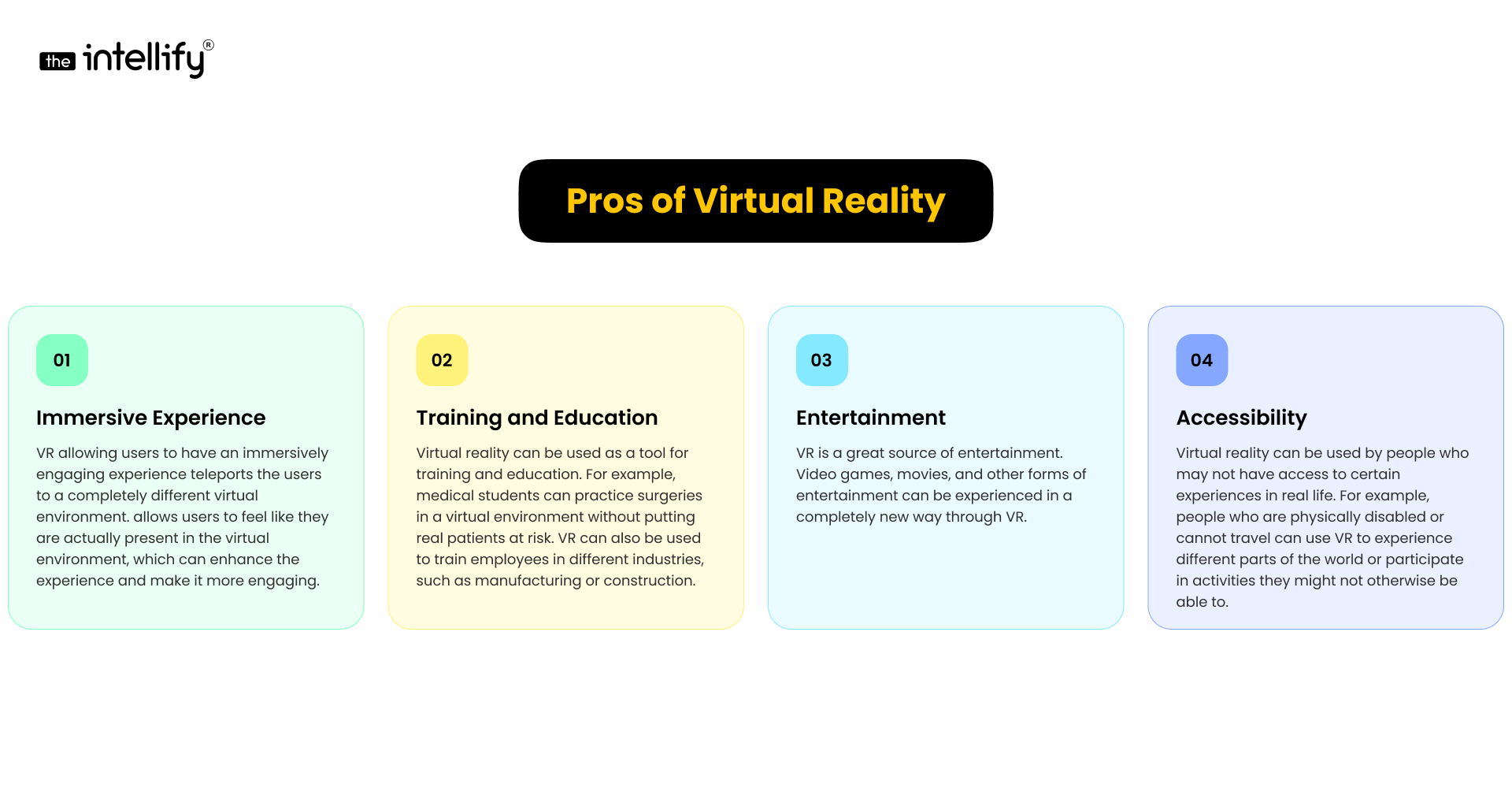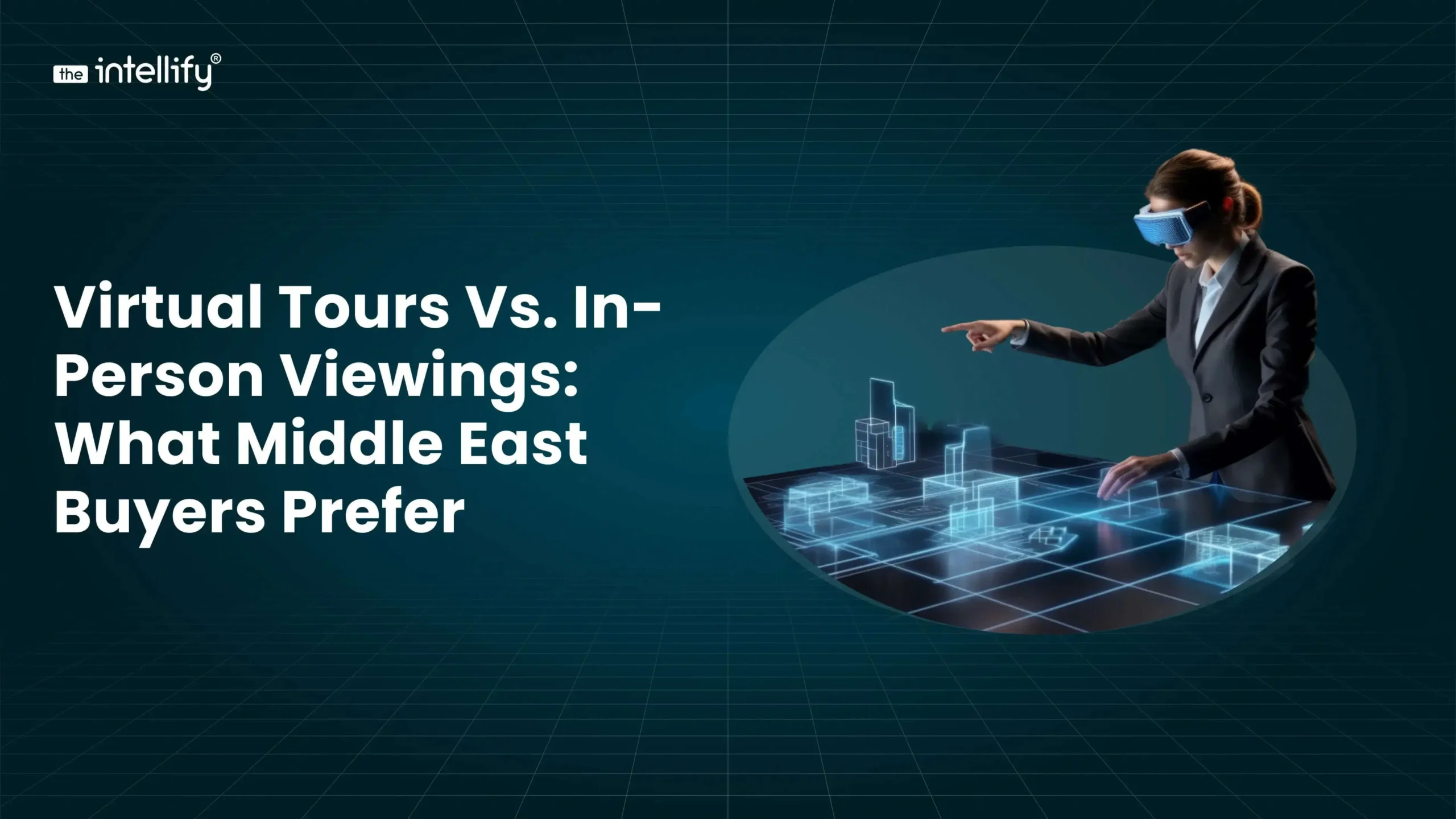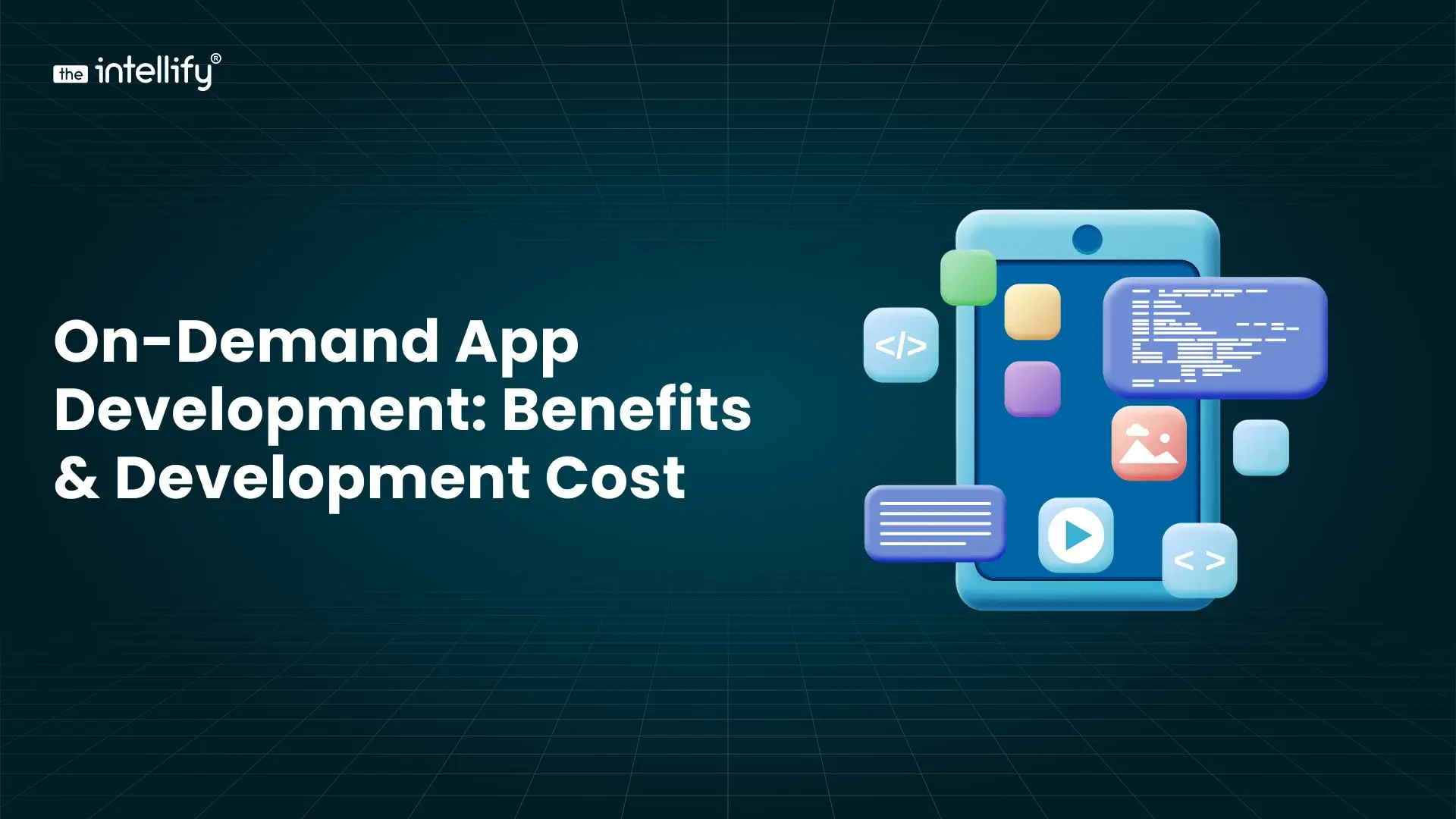
Virtual Reality offers an Immersive Experience that can teleport users to different worlds and scenarios. Although Virtual Reality App development has many benefits, it has some challenges. Let’s see in this blog how VR flips both sides for the customers and their immersive Virtual experience.
Virtual Reality and Statistics: A New Era of Learning Insights
Virtual reality is fast increasing in popularity and effect across various industries. According to The Week, the global VR industry was valued at $15.81 billion in 2020 and is expected to grow to $62.1 billion by 2027, with a 21.6% CAGR from 2020 to 2027. According to Simbott, VR use in education has yielded encouraging results.
It emerged with pupils experiencing a 30% increase in retention rates. Furthermore, Elite IT Team, says that 60% of VR users in a poll said the technology improved their learning experiences.
Pros of Virtual Reality

- Immersive Experience:
VR allowing users to have an immersively engaging experience teleports the users to a completely different virtual environment. allows users to feel like they are present in the virtual environment, which can enhance the experience and make it more engaging. - Training and Education:
Virtual reality can be used as a tool for training and education. For example, medical students can practice surgeries in a virtual environment without putting real patients at risk. VR can also be used to train employees in different industries, such as manufacturing or construction. - Entertainment:
VR is a great source of entertainment. Video games, movies, and other forms of entertainment can be experienced in a completely new way through VR. - Accessibility:
Virtual reality can be used by people who may not have access to certain experiences in real life. For example, people who are physically disabled or cannot travel can use VR to experience different parts of the world or participate in activities they might not otherwise be able to.
Adventures Without Risk
With VR, there’s no risk of getting into an accident as you experience an adrenaline rush. Forget about climbing to the top of Mount Everest and getting altitude sickness. Or, swimming with sharks and getting bitten.
Some VR experiences can make you feel like you’re in a new world. They also let you discover new cultures and customs without the hassle of travel. This extends to even going for adrenaline activities too. You can feel the thrill of a roller coaster or bungee jumping in VR. You get to have all the fun without the risks.
Increases Exposure To Green Spaces
Researchers have known that nature and green spaces can improve human health. Researchers now use virtual reality to bring nature to people who cannot access it. The health effects are less positive than those of real nature. Scientific American has noted this. It can be more beneficial for people with diseases.
The diseases often prevent them from spending much time outside. Despite the importance of direct contact with nature. Virtual tech can ensure that citizens of greenery-poor cities receive their nature boost.
Enables Hands-on Learning
Virtual reality also enables hands-on learning experiences that might not otherwise be possible. Simulations and interactive experiences help students learn by doing. They do not just observe.
For example, medical students can use VR to practice surgeries. They can do so without the risk of harming a real patient.
Cons of Virtual Reality

- VR Development Cost: VR technology can be expensive. High-end VR headsets can cost several hundred dollars, and the equipment required to run them can also be costly.
- Health Risks: Virtual reality can cause some health risks. For example, some users may experience motion sickness, headaches, or eye strain after prolonged use.
- Isolation: VR can be an isolating experience. Users are often cut off from the real world and may not be able to interact with others in the same way as they would in real life.
- Addiction: Virtual reality can be addictive, particularly when it comes to gaming. Some users may become so immersed in the virtual world that they neglect real-life responsibilities or relationships.
Privacy Concerns
Virtual reality can become the new frontier for hackers. Spyware analysis by the University of California, Riverside found that ‘spyware can watch and record our every move. It uses Artificial Intelligence to turn those movements into words. It does so with 90% or better accuracy.
It can spy on the environment around you. It can also notify the attacker of your communications with the headset.’
Causes Cybersickness
Virtual reality has several side effects. One of them is cybersickness. One can compare it to motion sickness. The symptoms include disorientation, dizziness, nausea, and muscle fatigue. This was stated by The Conversation. The side effects depend on factors such as how complex the scene is. They also depend on how well the VR copies the user’s movements.
Additionally, they depend on the user’s age and the time they spend in VR. A survey found that 80% of VR users have at least one side effect. More research suggests it may have long-lasting effects.
Technical Issues
Another disadvantage of VR stems from technical issues that cannot be overruled. VR requires great hardware. It is necessary to deliver the immersion in a virtual environment. However, today, there are problems. Current technology cannot perfectly display visuals.
For example, most VR headsets now have some limitations. They are limited by resolution and FOV. This can create a screen door effect and pixelation. The view is limited compared to the real vision. These technical barriers do not create an engrossing environment. They can also be uncomfortable.
Conclusion
Over the years, virtual reality has provided several benefits in learning. These include increased interest, retention, and training. Like all technology-assisted communication, it has disadvantages. But, you can manage many of these issues by planning and executing the intended use well.
If you have any questions or need support, feel free to Contact us. Used correctly, virtual reality will change the traditional classroom. It will improve learning for all students, regardless of their age or diversity.
If you are in search of a virtual reality app development company in USA, look no further than The Intellify.

Written By, Shravan Rajpurohit
Shravan Rajpurohit is the Co-Founder & CEO of The Intellify, a leading Custom Software Development company that empowers startups, product development teams, and Fortune 500 companies. With over 10 years of experience in marketing, sales, and customer success, Shravan has been driving digital innovation since 2018, leading a team of 50+ creative professionals. His mission is to bridge the gap between business ideas and reality through advanced tech solutions, aiming to make The Intellify a global leader. He focuses on delivering excellence, solving real-world problems, and pushing the limits of digital transformation.


Virtual Tours vs. In-person Viewings: What Middle East Buyers Prefer (2026)
Summary In 2026, immersive virtual tours are a baseline expectation across Gulf property listings: they extend reach, qualify higher-quality leads, and shorten time to offer. In-person viewings remain essential for tactile verification and closing premium purchases. The most effective teams apply a virtual-first, trust-aware approach: use virtual assets to inform and qualify, then deploy tightly […]


AR/VR in Real Estate: Boosting Property Sales Across the Middle East
Quick Executive Summary AR and VR are transforming real estate sales across the Middle East by enabling immersive virtual property tours, AR-based staging and customisation, and large-scale digital twins for master-planned communities. These technologies shorten sales cycles, increase engagement, and expand reach to international buyers while lowering marketing and staging costs. Leading regional developers, government […]


Virtual Reality (VR) Training: Benefits & Industry Use Cases
Summary VR training (Virtual Reality training) uses immersive simulations to help people learn faster, practice safely, and retain knowledge better. This blog explains how VR is transforming industries such as aviation, healthcare, sports, driving, military, and corporate learning. It covers real-world examples like virtual reality surgery training, VR flight simulations, VR therapy, and more. You’ll […]


On-Demand App Development: Types, Benefits & Development Cost
Summary On-demand app development is transforming how businesses deliver fast and convenient services. This blog covers what on-demand apps are, their rising popularity, types, key benefits, popular examples, features, development process, and costs. Learn how an on-demand app can boost growth and enhance customer satisfaction. In today’s fast-paced world, convenience is everything. People want services […]


How to Choose the Best AI Agent Development Company
Summary This blog explains how businesses can choose the best AI agent development company to build intelligent and reliable AI solutions. This blog explores what AI agents are, how they work, and their real-world applications across industries like finance, healthcare, and manufacturing. It also outlines key factors to consider before hiring a partner, such as […]


How Conversational AI Voice is Transforming Restaurant Orderings
Summary Conversational voice AI lets customers speak orders via phone, drive-thru, apps, or smart speakers and uses speech recognition + NLP to process, confirm, and route orders directly into POS systems. It reduces missed calls and errors, boosts average ticket size through consistent upsells, and eases staff workload, delivering measurable operational and revenue benefits for […]
0
+0
+0
+0
+Committed Delivery Leads To Client Satisfaction
Client Testimonials that keep our expert's spirits highly motivated to deliver extraordinary solutions.



















